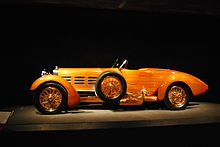Tulipwood


Most commonly, tulipwood is the greenish yellowish wood yielded from the
Other types

Brazilian
Brazilian tulipwood is a different species. A classic high-quality wood, it is very dense with a lovely figure. It is used for inlays in furniture and for small turned items. Available only in small sizes, it is rarely used in the solid for luxury furniture. Like other woods with a pronounced figure it is rather strongly subject to fashion.[citation needed]
In the nineteenth century Brazilian tulipwood was thought to be the product of the brazilian
American tulipwood
The cheap, soft and pale wood from the tuliptree Liriodendron tulipifera is known as American tulipwood or poplar and American whitewood, canary whitewood and canary wood, it is widely used.[4]
Australian
There also exists the "australian tulipwood", "tulipwood trees" the common name of
Others
Also exists the tuliptrees,
References
- ^ Tulipwood published by Niche Timbers.
- ^ Record S.J., Clayton D.M.: Timbers of tropical America. Yale Univ. Press, 1924, p. 288, 455, online on babel.hathitrust.org.
- ^ Brazilian tulipwood on wood-database.com.
- ^ "Website". Exotic Wood Zone. Retrieved 2024-02-13.
- ISBN 978-0-643-10784-7, p. 66, 100.
- ^ ISBN 978-1-4665-7681-0, p. 232, 338, 1206.
- ^ F.A.Zich; B.P.M.Hyland; T.Whiffen; R.A.Kerrigan (2020). "Drypetes deplanchei". Australian Tropical Rainforest Plants (RFK8). Centre for Australian National Biodiversity Research (CANBR), Australian Government. Retrieved 27 May 2021.
- ^ New South Wales. Votes and Proceedings of the Legislative Assembly. Session 1872–73, Vol. 2, 1873, p. 866.
- ^ The Agriculture News. Vol. XI, No. 274, 1911, online on biodiversitylibrary.org.
